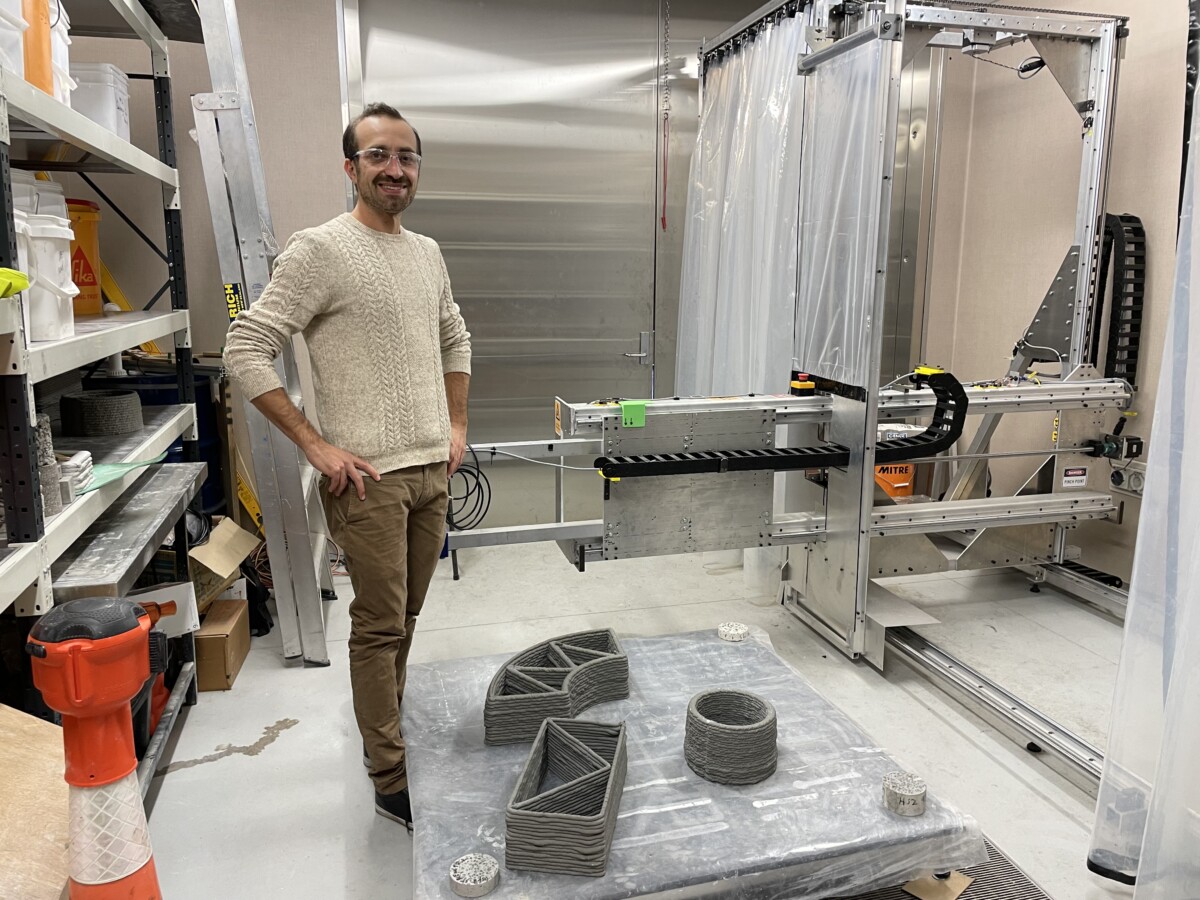Research aims to build a sustainable future with 3D concrete printed homes
01 Aug 2022, Building and housing, News

Share the post "Research aims to build a sustainable future with 3D concrete printed homes"
The University of Canterbury is undertaking a research project to bring commercial 3D concrete printed housing closer to a commercial reality
Over the next three years, architectural engineer Dr Guiseppe Lopocaro and his research team will investigate the use of sustainable materials for 3D concrete printing.
“Low carbon is an important aspect of our research. We plan to build on our research to date, developing sustainable material for 3D concrete printing; for example, re-using mussel shell waste and other resources. We also plan to optimise the shape of elements to reduce the total amount of material needed, along with carbon dioxide emissions.”
Lopocaro said focus will also rest on design and structural engineering, with particular attention paid to what a 3D printed house would look like in New Zealand.
Kiwi-proof building required
“We will consider how to make something suitable for our communities,” said Lopocaro, “rather than repeating what has been done overseas.”
He believes partnering with QOROX, a 3D concrete printing company based in New Zealand, will help the research team to reach its goals.
“They will be part of our technical advisory team and the partnership will also allow us to print larger scale 3D printed elements,” said Lopocaro.
A key goal is to investigate how to create seismic resilience by integrating high-strength steel into 3D concrete printed walls, while learning how to produce high quality, low-cost housing.
“Affordability is another big issue in our housing market,” added Lopocaro. “3D concrete printed homes would offer a cheaper alternative and would help bring down the costs of construction.”
Pioneering technology
Prototype 3D printed homes have been built before. In 2017, a 3D printed home was produced by an American company for under $15,000.With a size of 38m², the home included a hall, bathroom, bed, living space and compact kitchen.
Closer to home there have been smaller examples of the technology in action. For example, a stylised park bench was produced using 3D printed concrete in Hamilton.
Exciting times
Concrete NZ Chief Executive Rob Gaimster told Under Construction he was excited about the prospect of more sustainable methods of concrete production.
“Concrete NZ is excited about the concrete industry decarbonising and playing its part in New Zealand becoming net carbon zero by 2050. Our industry is working hard to reduce its environmental loading through a range of strategies, key amongst which is supporting innovation, under which the development of 3D concrete printing fits.
“Furthermore, the New Zealand concrete industry is committed to supporting research that will enable the ongoing reduction of CO2 from cement and concrete manufacturing and delivery processes.”
Register to earn LBP Points Sign in



